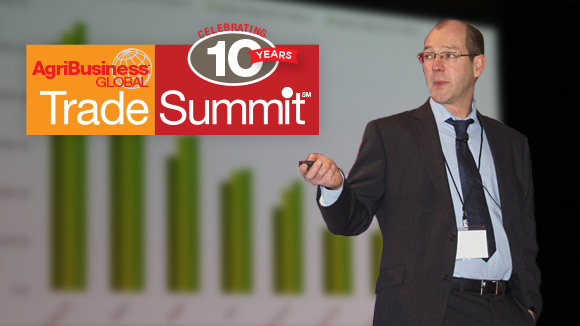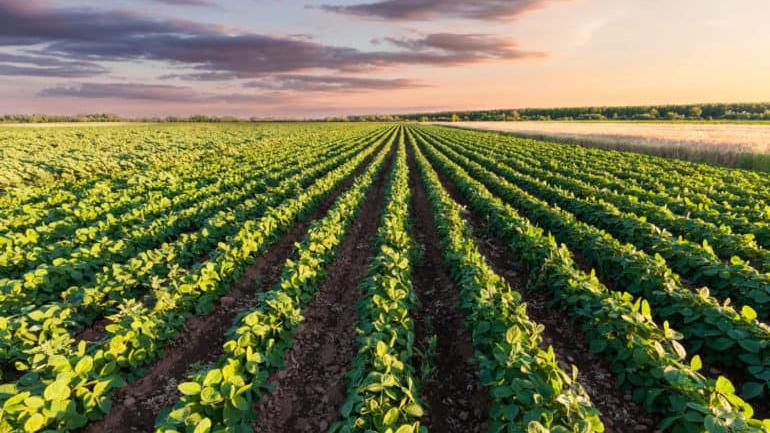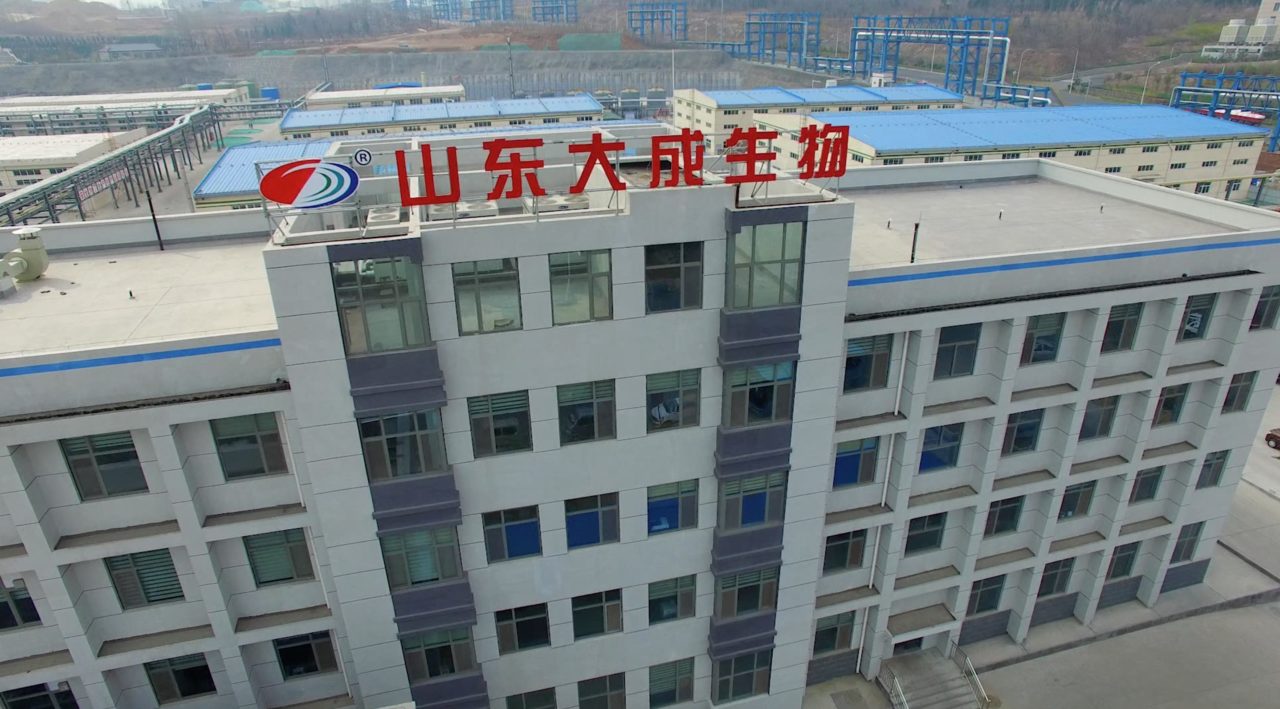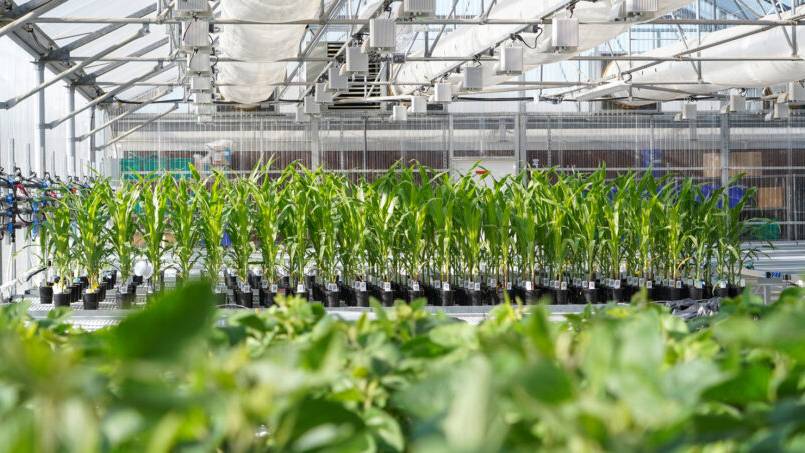Live From the Trade Summit: More Generics, More Mergers to Follow a Tough Year

“Everybody wants to be in the (emerging off-patent) sector, but we have to avoid dragging things from proprietary immediately into commodity status by everybody making it and no product differentiation.” –Dr. Bob Fairclough
The global crop protection market fell 9.8% to $55.6 billion in 2015, the first decline in the last five years, hit by the strength of the U.S. dollar and low commodity prices, but the fundamentals are in place for a more optimistic view of the coming years, Dr. Bob Fairclough told attendees at the AgriBusiness Global Trade Summit in Orlando, Florida, USA on Aug. 18.
Fairclough pointed out that if the market were looked at in terms of the euro, area treated, and volume, it showed growth last year. Globally over the last six years, the crop protection market has grown 4.6% per annum, even accounting for last year’s drop.
In addition, the United States regained its position as the No. 1 crop protection market in the world, slightly surpassing Brazil in 2015, with just over $8 billion in sales at the ex-manufacturer level. China ranked third in sales with about $6 billion in sales at ex-manufacturer level.
Herbicides took the biggest hit last year, while fungicides outperformed all other crop protection segments last year — a trend Fairclough sees continuing. “As emerging economies get wealthier and wealthier there is a shift from the insecticides, which are needed, to the fungicides, which provide the extra quality. We will see the fungicide sector growing more over the next few years,” he said.
No global region was spared from the agchem industry’s challenges last year, but the European market took the hardest hit in dollar terms, particularly Germany. Fairclough named Iran the worst performing country in 2015 mainly on devaluation of the local currency, but he expects it to reverse course to a growth market looking ahead. Ghana, Finland, Greece, Algeria, Croatia, New Zealand, Nicaragua, Japan, and Belgium also performed poorly. Fairclough sees Japan declining year on year probably for the next five years as the government opens up the market to generics and tariffs are reduced on rice.
Although all global regions recorded declines last year, there were standouts. The countries that led growth: Romania — which has posted double-digit gains for the past six years — Costa Rica, Uruguay, Indonesia, Nigeria, Paraguay, Honduras, Argentina, Ukraine, and Vietnam.
MORE GENERICS, MORE MERGERS
Off-patent products currently occupy 77.5% of the total crop protection market, compared with 22.5% for patented products. “(The proportion) does matter in terms of size of the industry and how the industry is going to be driven forward,” Fairclough said. The percentage of off-patent products will increase by 1% to 2% per year over the next four to five years.
The agchem downturn has hurt generic companies more than multinationals, but it can’t be overlooked that the biggest generic companies are the multinationals — Dow’s biggest product is glyphosate, and Syngenta by definition is the biggest generic company. “The older products were impacted more than the proprietary products, however, I don’t think that’s going to change the dynamics over the long term.”
In the off-patent sector, one kilogram of active ingredient averages about $15. Patented products stand in sharp contrast, commanding an average of $193 per kilogram.
Products coming off patent in the next five years command about 14% to 15% of the global market, or about $8 billion to $9 billion of active ingredient carrying an average price of $181 per kilogram, according to Fairclough. “Everybody wants to be in the (emerging off-patent) sector, but we have to avoid dragging things from proprietary immediately into commodity status by everybody making it and no product differentiation,” Fairclough said. “We are becoming more generic and less proprietary, there is no question about that. It is stripping value out of the market, and it is going to be hard to see the increase in value apart from what we see in terms of volume.”
At this point in time, there is the largest number of AIs coming off patent that there will be for at least the next 15 years.
Another factor to consider is the changing structure of the industry. The Big 6 now capture 63% of total industry sales. Fairclough said, “It is a relatively healthy position, this dog with a very long tail. It drives innovation and keeps the whole system of product moving from company A to company B in a healthy situation.” But, the industry is looking at three potential mergers in the next year: Bayer and Monsanto, Syngenta and Adama, and Dow AgroSciences and DuPont.
He pointed to the significance of the large gap that would exist in sales between the top merged entities and the next-largest companies, the latter group being led by BASF. Fairclough says there is no doubt there will be more mergers, first and foremost among the Chinese companies.
“A merger in itself is interesting but it’s also the impact on the dynamics of the industry, the flow of active ingredients from proprietary to generic, who’s whose friend, and impact on the size of the industry going forward,” he said.
As the industry consolidates and fewer AIs fall off patent, multinationals will increasingly hone in on older chemistries, including 2,4-D, dicamba, and paraquat. Fairclough compared it to a boiling pot, where an increasing number of challenged companies are dealing with a decreasing number of AIs.
On the positive side, “if you are moving now, if you are looking at the good active ingredients, if you are differentiating your products from other companies, the opportunities are very much there.”
An encouraging sign for the future of crop inputs, moreover, is increasing demand for pork and poultry driven by Asia’s exploding middle class. “It is surprising seeing (the persistence of) low commodity prices when all the fundamentals are in place. For sure, they will track upward again, it’s just a question of when.”






